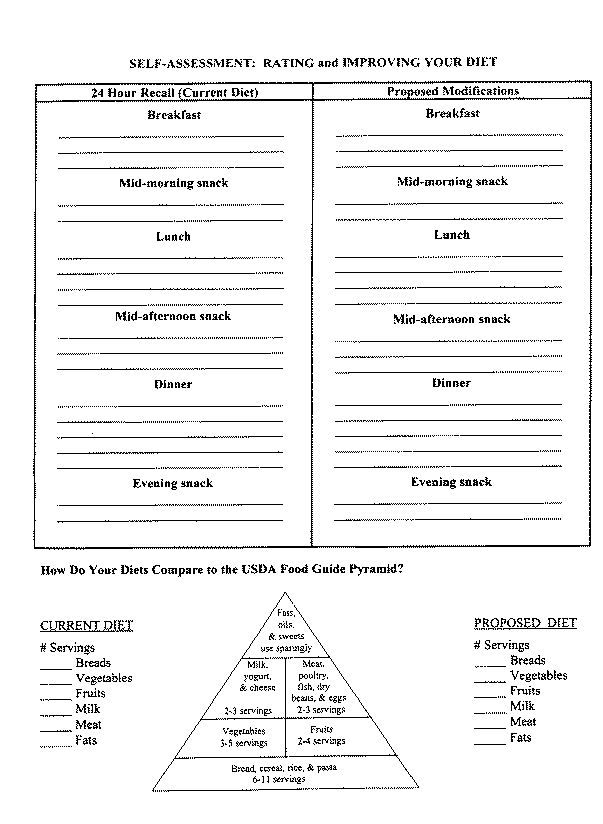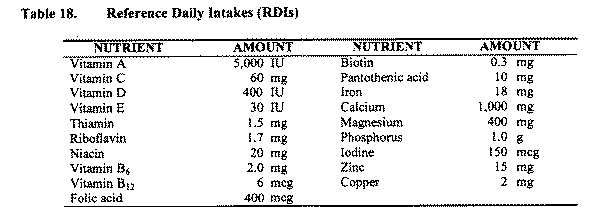WHAT IS A
HEALTHY FOOD PLAN?
In an effort to help you achieve optimal health,
we a providing some nutritional guidance for you. Unfortunately, most people do not take
time to understand that optimal nutrition can boost your resistance to disease.
Periodontal disease is no exception. When we are afflicted with periodontal disease our
body is waging war against this infection. We need to do all that we can to help it win.
Additionally, optimal nutrition can help you to heal faster
following periodontal treatment. If you take these suggestions seriously, you can improve
not only your periodontal health, but your general health as well. Here are some well
researched basics that we would like to share with you.
Unless you have a metabolic disorder or other specific nutrition
related health problem, you can enjoy virtually any food. That is, as long as you practice
moderation, and varietywith your food choices. Moderation means eating neither too much
nor too little of any one food or nutrient. Eating too much translates into excessive
caloric intake and excessive nutrient intake. Eating too little leads to inadequate body
mass and nutrient deficiencies. Variety refers to consuming a wide variety of foods within
each of the five basic food categories. One should eat different types of grains, fruits,
vegetables, dairy, and meats at different meals .
The USDA has created the "Food Guide Pyramid" as a guide
for good daily food choices. The smallest number of servings is the recommendation for a
person with an energyneed of 1600 Kcalories , while the larger figure should be used by a
person who needs 2800 Kcalories or more.
Try taking the self assessment and see where you stand. Many
patients are very surprised when they do this.

Here are some examples of what a serving is:
Grains---1 slice of bread, 1/2cup of cereal, cooked
rice, or pasta. Vegetables---1cup raw leafy, 1/2cup raw or
cooked vegetable. Fruits---6oz juice, 1/2cup fresh, frozen , or
canned fruit. Dairy---8oz milk, 1cup yogurt , 1.5oz cheese. Meats---30oz
meat , 1 egg, 1/2cup cooked beans
What about nutritional supplements?
Vitamins and minerals are found in a "balanced" state in
foods. In foods they are in both oxidized and reduced forms and are also balanced by the
other chemicals withinthe food. In supplements, only parts of foods are found which tend
to be "unbalanced".Clearly, the best source of vitamins and minerals is food .
There is much debate whether vitamin and mineral supplementation is beneficial for people
who consume balanced and varied foods. Today, there is insufficient scientific data
concerning this.
Supplements may be beneficial for some of us. Certainly we all have
heard reports of improved healing and resistance to disease and to cancer when supplements
are taken, but the amounts and mechanisms are just now under intense research. These are
the recommended dietary allowances established by the National
Academy of Science:

You should compare any supplement you are considering with this
table. Frankly, there are so many vitamin products available and unfortunately, not all of
them are adequate. The amounts set forth in the Table above are recommended dietary
allowances. Many of us take greater amounts than those listed above. For example, Vitamin
C is usually taken in doses of 250 to 1000 mg. Vitamin E is commonly taken from 100 to 400
mg.
Finally, much research has been done on which vitamins and nutrients
are essential for optimal oral health. When selecting a supplement, be sure to find one
that has proper RDI’s of the nutrients listed in the table below.
